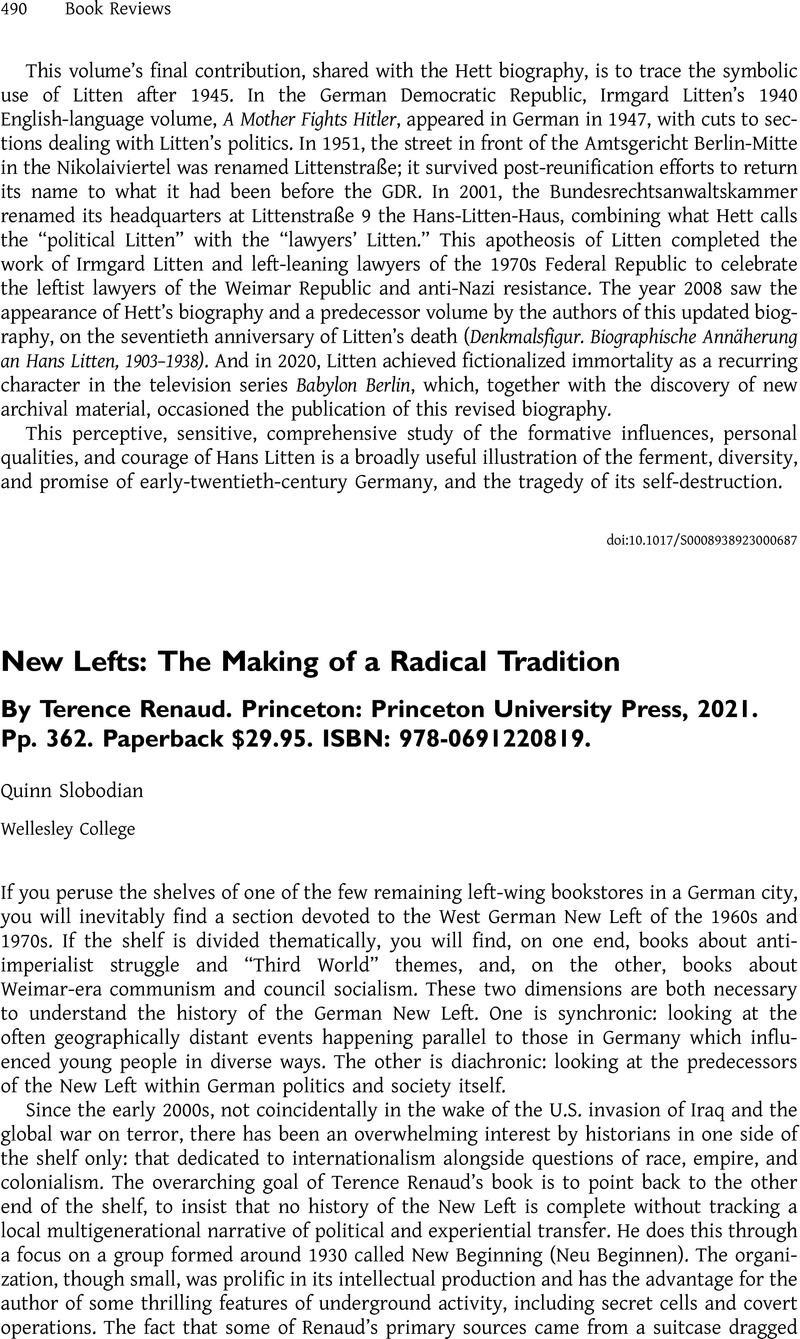No CrossRef data available.
Article contents
New Lefts: The Making of a Radical Tradition By Terence Renaud. Princeton: Princeton University Press, 2021. Pp. 362. Paperback $29.95. ISBN: 978-0691220819.
Review products
New Lefts: The Making of a Radical Tradition By Terence Renaud. Princeton: Princeton University Press, 2021. Pp. 362. Paperback $29.95. ISBN: 978-0691220819.
Published online by Cambridge University Press: 08 November 2023
Abstract
An abstract is not available for this content so a preview has been provided. Please use the Get access link above for information on how to access this content.

Information
- Type
- Book Review
- Information
- Copyright
- Copyright © The Author(s), 2023. Published by Cambridge University Press on behalf of Central European History Society of the American Historical Association

